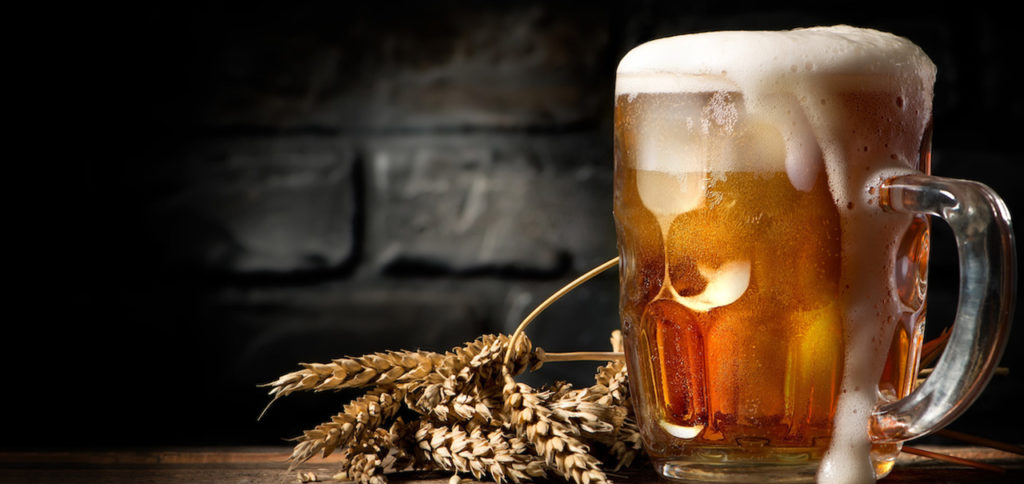Curiosity about new flavors with a splash of modern zeitgeist: Landbier and Kellerbier varieties move into the fast lane

Specialty beers are making waves on the German beer market. The Landbier and Kellerbier styles have joined lager as drinkers’ favorites. That shouldn’t come as a surprise: These styles of beer perfectly meld the current zeitgeist with drinkers’ desire to switch things up and taste something new. Beverages in this vein embody the concepts of local production, artisanship, tradition and a commitment to quality.
The title of market leader for Kellerbier goes to Kulmbacher Brauerei – or so they claim. The company introduced their own version of the unfiltered “cellar beer” in 2004 under the Mönchshof brand. Since then, the beer has taken off. At first, the brewer’s competitors paid little attention to the new kid in the tavern. But the beer’s success soon turned heads and inspired a number of copy cats. Today, many major brewers have added Kellerbier and Landbier to their lineups. In 2014, for instance, the Veltins brewing company introduced a Landbier called Grevensteiner Original that has been churning out double-digit growth ever since. And this year is no exception. Grevensteiner reported a gain of 16 percent for the first half of 2019, which translates to a total of more than 126,000 hectoliters.
Landbier and Kellerbier: Growth continues unchecked
Germany’s Bitburger brewery responded to the specialty beer trend in March 2018 by adding a new beer style to its shelves for the first time in 25 years. The new addition was meant to complement its pilsner, and took the form of an amber-colored Kellerbier. According to the brewer, expanding their product line to include a Kellerbier was their way of trying to fulfill consumers’ growing desire for mild beers. That means reaching out to new target groups and tapping into the strong potential of the new brand.
The fact is that the specialty beer business has been skyrocketing for years now. Nielsen reports that the German market share for Landbier and Kellerbier totaled 5.8 percent in the first half of 2019 (first half of 2018: 5.4 percent). More than 80 Landbier brands and 260 Kellerbier products are being sold in Germany today. Sure, the taste may differ slightly.
The Landbier and Kellerbier trend has already inspired a tremendous range of beers: The German Brewing Association estimates that more than 6,000 different brands are being sold – 1,000 more than 10 years ago.
But they all still fall into the same category of beer. They are bound together by brewing tradition and drinkability. And every brewery has its own recipe and story.
Word of mouth fuels demand

In retail, the Landbier and Kellerbier varieties have already made it well beyond the seasonal niche. Over the past two years, consumers have delighted in a whole range of newcomers that they can drink year round. Taste and brand appeal are the primary criteria for restaurants and bars. More and more guests want to experiment with new beers. If a beer tastes good, customers will want to order a second one. And, most importantly, the customers will later recommend the beer to others. These recommendations tend to trigger enormous demand. That doesn’t mean restaurant owners and barkeepers can afford to keep mum. It’s important that they also suggest that their patrons try these drinkable, full-bodied Landbier and Kellerbier options that go easy on the hops. Since persuading their customers to try something new can certainly help boost their sales, the pitch is definitely worth a try. After all, specialty beers generally cost more than other types of beer and usually generate higher margins as a result.
Long-term trends
Unlike other product groups in the FMCG area, specialty trends in the German beer market hold strong over the long term. These trends generally evolve in the same way: In the first phase, consumer demand for individual brands sparks market momentum and generates a certain amount of volume. During the second phase, brewers make decisions about certain products, and these are then introduced to the marketplace. At this point, early pioneers develop market power and attract additional attention from consumers, retailers and the gastronomy sector. Sales skyrocket if the brewer has a powerful sales force behind it. By this stage, late-comers to the party and copy cats have a hard time convincing consumers to drink their product. In the third phase, the segment begins to be defined by firmly established brands. Retailers and the gastronomy sector struggle to push new listings. But leading brands continue to grow without issue.
Compelling brand stories
All successful Kellerbier and Landbier concepts share one trait: compelling brand stories. Today, specialty beers are shaped by more than just taste. Relatable, realistic stories play a key role in their development as well, as the Grevensteiner beer shows. They didn’t bring in a fancy outside marketing team to come up with the retro look for their beer.
Instead, by digging into a company history that started in the German town of Grevenstein, the brewer revived the letterhead found on old company documents. No artificial embellishment, just plain old authenticity. A choice like this gives customers something that they can feel for themselves and appreciate. These stories travel like wildfire when they hit the internet – and they do so across national borders.

drinktec 2021: experiencing beer variety for yourself
You will be able to sample all sorts of beer at drinktec 2021. The huge tasting arena will offer an alternating range of free beers from all parts of the world, including some really special brews and rarities. drinktec will be held from September 13-17, 2021, at the trade fair site in Munich.
